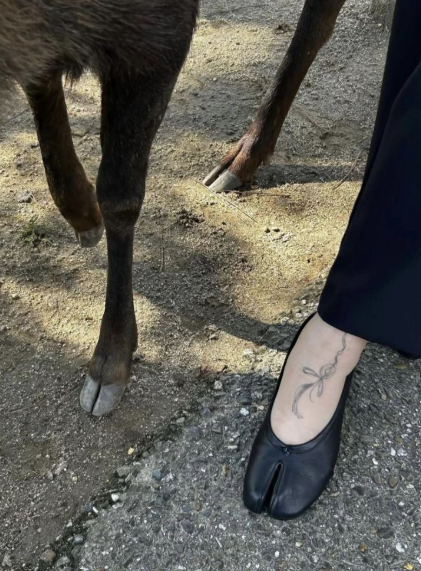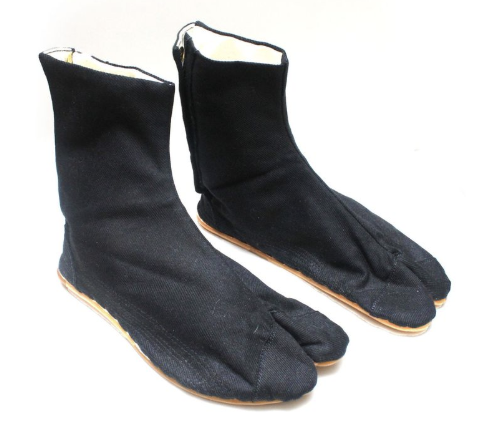The Evolution of Tabis: From Ancient Japan to Modern Runways
Camel toe. Whenever I wear my tabi boots, someone inevitably pulls up a picture of a camel and holds it next to my shoe. It's definitely become a running joke. A revealing one though—I’ve come to realize many people may not know about the rich, cultural history behind the split-toe design. Beyond its role within the avant-garde fashion scene, tabi footwear has been a timeless staple of fashion for centuries.
Image Courtesy: Pinterest
The Origins of Tabi
Tabi-style socks first emerged in Japan during the early 1400s, and they were heavily influenced by Chinese and Mongolian footwear. During this time, wealthy Japanese people would wear tabi-socks with traditional sandals like zori and geta. The split-toe design was not an aesthetic choice; instead, it was created as a means to balance properly. These split-toe sandals were worn by the vast majority of Japanese people during this time period, including samurais, farmers and merchants.
Image Courtesy: Pinterest
The Workwear Revolution
Fast forward to the early 1900s, the traditional tabi sandal designs were upgraded by Shojiro Ishibashi. He added a rubber sole onto the bottom of the tabi sandal to create the “jikatabi.” This upgraded version of the tabi shoe became particularly popular among labor workers, especially within the fields of farming and construction, as there was a higher degree of flexibility and traction in addition to the increased balance from the split-toe design. These tabi shoes were seen as practical and durable — a sharp contrast from its high-fashion perception today.
Image Courtesy: Pinterest
Maison Margiela’s Take on Tabis
In the late 1900s, Belgian designer Maison Martin Margiela took this traditional Japanese footwear design and reinvented it into a subversive fashion statement. His signature tabi boots debuted in his first collection, and many people had contrasting thoughts and opinions regarding its design. Some loved it, some hated it, but one thing’s for sure—there was a shock factor to its design that had the public talking. After the tabi’s debut in 1988, Margiela expanded the tabi lineup into a wider range of footwear, such as tabi flats and tabi sneakers.
Image Courtesy: SSENSE
A Timeless Legacy
Tabi footwear has definitely stood the test of time, evolving from traditional Japanese sandals to a revolutionary work shoe and now a bold, avant-garde fashion statement. Whether it is loved or questioned, the tabi style’s impact on both function and fashion is undeniable. Next time you see a pair of tabi shoes, remember that they’re not just about aesthetics — they carry a legacy of craftsmanship, practicality and cultural history. While people may still joke about my "camel toes," I know I am wearing something with a history much deeper than its unique shape.
Image Courtesy: Melody Gu
Strike Out,
Writer: Melody Gu
Editor: Naina Chauhan
Melody Gu is a writer for Strike Magazine Gainesville. She spends her free time thrifting, making a playlist for every new emotion experienced, or quenching her thirst for a matcha latte with oat milk. You can reach out to her on Instagram @melodyygu or by email at melodygu8@gmail.com.





